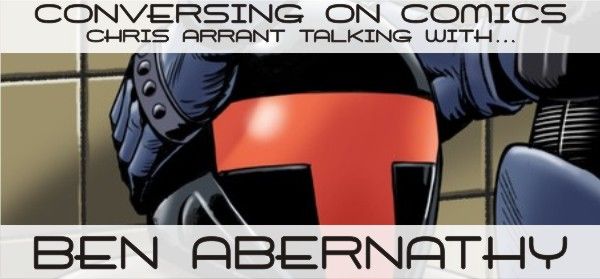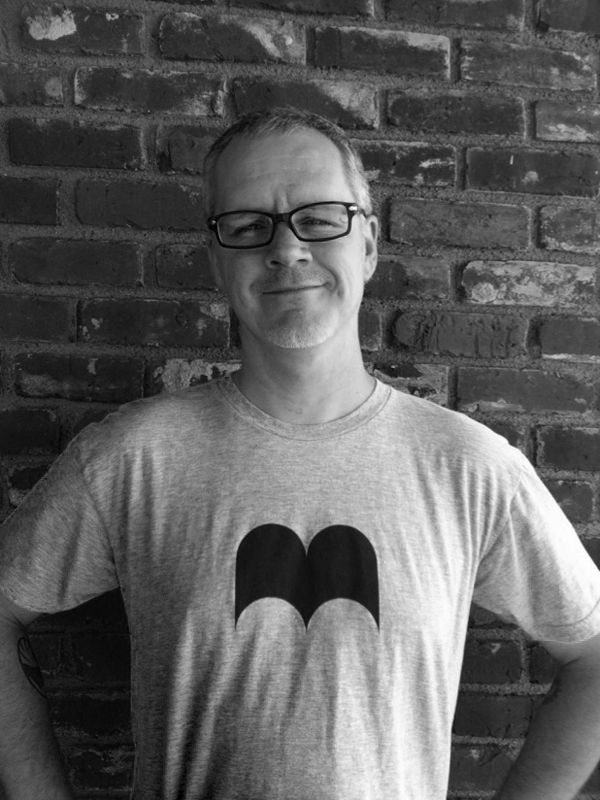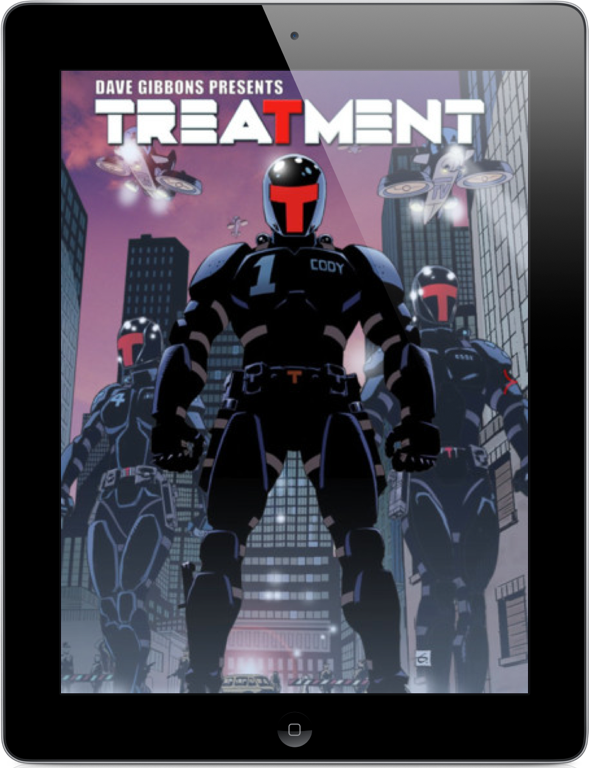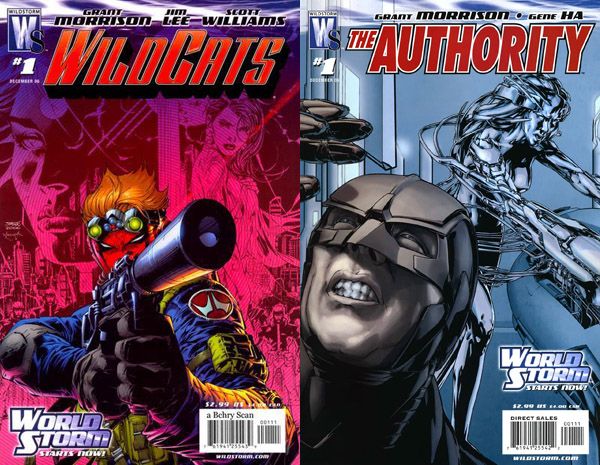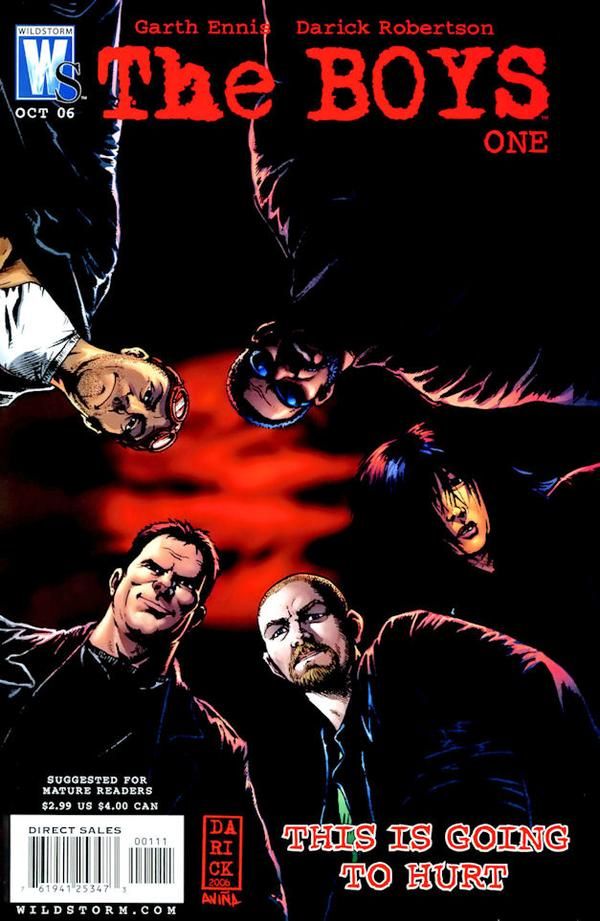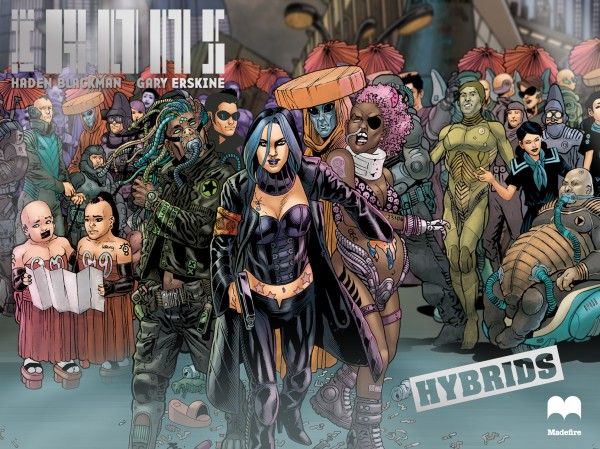Writer Gail Simone calls Ben Abernathy "one of the best editors/idea men in the business," and over the past 15 years -- through his time at Dark Horse, Marvel, WildStorm, DC Comics and now digital publisher Madefire -- he's pushed the boundaries of what can be done in the medium. He was part of Marvel's move into trade paperbacks and graphic novels, and shepherded WildStorm's hard sci-fi and superhero work. WildStorm gave way to DC Digital, where Abernathy helped to break the mold of how comics are read, and that continues at Madefire, which publishes serialized creator-owned comics online and via mobile devices.
In addition to discussing Abernathy's work at Madefire, I asked the longtime editor about his time at WildStorm, where he took over for Scott Dunbier, and his thoughts on the imprint's collapse in 2010.
Chris Arrant: Thanks for talking to us, Ben. A lot of people are unfamiliar with Madefire, so can you tell us what makes Madefire unique as a comics publisher?
Ben Abernathy: Madefire is unique as a publisher in that we’re creating all-new, original content strictly for digital release, not a print/digital hybrid, or releasing content digitally first, later to be reprinted in a comic book that same month. Our goal is to create an immersive reading experience, using various cinematic elements and a customized score, that’s intended to be enjoyed on mobile devices. And for the time being our app (available for iPad, iPad mini, iPhone and iPod Touch) and all motion-book content are available as free downloads. The only investment you have to make is time!
And what’s your day-to-day job like there?
In a lot of ways, it’s very similar to when I worked for print publishers. I’m a morning guy, so I arrive early and immediately go through my email to see what emergencies are waiting for me, monitor creator progress, and really see what the day/week holds. I tend to have a call or two per week with Europe so those will eat up the occasional morning as well. Then, I try to spend an hour or two in the reading various proposals, scripts, screenplays, etc. (as there’s a lot of material to work through) while my mind is still fresh. The afternoons tend to be a bit more of a juggling act between meetings, calls with U.S. creators, more reading/reviewing and scouring through the latest motion-book builds (which have increased now that we’re hitting consistent weekly releases) on various iPad and iPhones and giving feedback on everything from the sound editing and music, the motion elements, and basic editorial stuff like making sure the balloons are going to the right characters and everyone’s named is spelled right. Ha! It makes for a pretty full day, but I’m loving it all so far.
For the past 16 years you’ve worked as part of big publishing houses like Dark Horse, Marvel and DC. How is it different for you now that you’re part of a lean publishing start-up?
It’s definitely been an ongoing adjustment,and I have been told once or twice “Ben, this isn’t DC"! But, the curve hasn’t been that steep, honestly, as there were several points at WildStorm where it felt like we were working for a start-up, particularly with the beginnings of CMX (DC’s manga line) and even DC Digital. There was an intense fiscal responsibility on every project, we often felt we had to do all the PR/Marketing ourselves, and there was definitely the feeling of “it’s us against the world.” So, as far as coming to a “lean publishing start-up,” I feel like I was fairly well prepared mentally for the challenges we face.
That being said, Madefire isn’t a “ramen start-up," as the founders have put together an impressive group of investors and advisors to best position Madefire for success — some big names like True Ventures, Sinna Tammadon, former SVP of Apple, and Tony Schneider, the genius behind WordPress, to name but a few. And being a smaller, tight-knit group we tend to be fairly nimble in our ability to plan and execute projects or ideas … it’s a refreshing change coming from larger companies!
In an interview after you joined Madefire you said one of the reasons you left DC after working for them for 10 years was because you saw Madefire was “ahead of the curve” when it comes to doing comics digitally. What specifically did you see that won you over?
Honestly, it was really just sitting down and experiencing one of their motion books. It’s compelling to see the videos on the website and to hear them speak of “an immersive reading experience," but the proof really is in the pudding. A recent review on the App Store sums it up pretty well: First there were books. Now there is Madefire.
Reading the motion books on an iPad, with headphones on, is really quite something — and being optimized for device makes a huge difference as what you read on iPhone isn’t just a straight re-sizing from iPad — a lot of thought and care goes into the separate experiences. So much effort goes into the storytelling and the application of sound/score, and considering it’s all done with their own proprietary software, it was clear that they were “ahead of the curve” based on everything else I’d seen — and in my position at DC Comics, I’d seen quite a bit!
I’ve seen creators doing comics under the Madefire umbrella describe it as a forward-thinking way to do comics, but for your part as editor, where do you come in to push that forward leaning?
That’s a good question, since we’re creating something entirely new here. The way I see it, the main role of an editor, like with print, is pushing to deliver the best story possible in a timely fashion. A motion book, though, adds an additional few steps after the delivery of script and art. And on that side of things there’s a lot more coordination involved as I help manage the vision of the creators (and in some cases, the artists are doing the base art AND story building in-Tool, serving almost as the director), my own thoughts of the best reading experience, and those of the experts we have on staff like our CCO, award-winning writer/artist Liam Sharp. This is one of the few instances I’ve found where there’s not an issue of having “too many cooks in the kitchen." Ultimately, while the tools and delivery are different, producing great content is still the goal!
Although you’re making a splash at Madefire, most people (myself included) remember you most fondly for your time steering the ship at WildStorm. You worked there in 2000 and then came back in 2002, working there until the imprint ended in 2010. How would you describe that experience overall?
It was a pretty terrific time, as while there were bumps in the road, it was an incredible opportunity to work on some amazing projects with many outstanding creators. I got the chance to work on some great super hero properties, some fantastic creator-owned projects, some of the top licensed properties in the business, and even quite a bit of manga! Then, I transitioned to head up editorially their pioneering work in the digital landscape with DC Digital, building up to and delivering a daily release of digital-first content … all in all, I’d describe my time at DC/WildStorm as pretty awesome.
What do you think ultimately led to WildStorm’s demise and the shift to the California DC contingent being remade into the Digital offices?
I was waiting for a question along these lines, heh heh! If I had to pinpoint specific events that contributed the most to WildStorm’s decline, and ultimate consolidation, it would have to be the result of a combination of two things that started in the fall of 2006 and then truly came apart in early 2007.
The first was the reboot of the WildStorm Universe with the “WorldStorm” event. We worked with some spectacular talent and had some amazing new projects come from the event, like Welcome to Tranquility and StormWatch: PHD, to name a pair, but our failure in delivering the flagship titles of WildCats and Authority ultimately had negative consequences. I really think that was the “final straw” for retailers when it came to the WildStorm Universe, and it was a real shame, as I’m pretty proud of the work we later produced with World’s End.
The other “event” was what infamously went down with The Boys. A lot’s been written about this and it’s not worth recapping or reliving here, but it was a crippling blow to the internal morale, a direct hit to our respectability with creators and retailers, and, frankly, a torpedo to our bottom line as The Boys was a home run for WildStorm when we weren’t getting that many hits.
And ultimately being “remade” into DC Digital probably can’t be pinned down to one singular event, either, but really attributed to the vision of Hank Kanalz and Jim Lee, who knew they had a hard-working, creative group on their hands and were wanting to push the envelope internally with new directions and ideas. WildStorm always handled a diverse amount of content and in a lot of ways were DC’s “Commando Team." So, in addition to the comics, we also did a lot of video-game design work, unique custom projects, motion comics — we really were best suited to take on the challenge.
Looking over your work in the comic industry, I see you as being on the forefront of understanding and developing comics for new trends. In 2001 and 2002 you worked at DC and Marvel just when trade paperbacks and collected editions were becoming mainstream, and at DC these past few years you guided DC to make digital comics not just an oddity but a definitive part of their output. Would you say you’re a forward-thinking person when it comes to comics?
I’d like to think I’m a forward-thinking person and not being a strict comic book purist, I’ve always wanted to explore different content and ideas. And really, I’ve also had the incredible fortune of being at the right place at the right time.
When I was at Marvel, I was handed the reprint program, among other duties, following the great Polly Watson’s exit and the goal was to take it from a boutique business, where they had been doing less than 12 new TPBs per year, to the laying the foundation to what it is now. We cranked out a lot of books in my time and this was before Marvel started keeping any serious digital files, so everything was handled by duping and collating the CMYK film — some long hours ensued! But I think our hard work really built a lasting foundation of success for the company.
Where and how do you see people reading comics 10 years from now?
I don’t know that it’ll be a huge difference to what we’re seeing now, although the digital experience will be more highly evolved and there’ll be a greater percentage of people reading on mobile devices. I don’t see the direct market dying in a decade nor any serious print abandonment although I think the profit disparity between the two will have greatly diminished. It’s going to be a pretty interesting decade, though, and I’m pretty excited about the role Madefire’s going to have in it!

